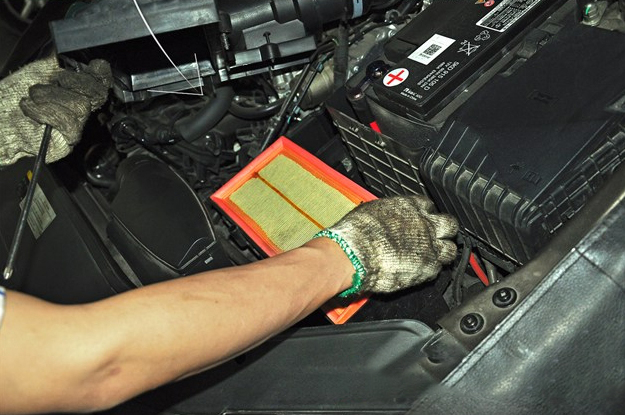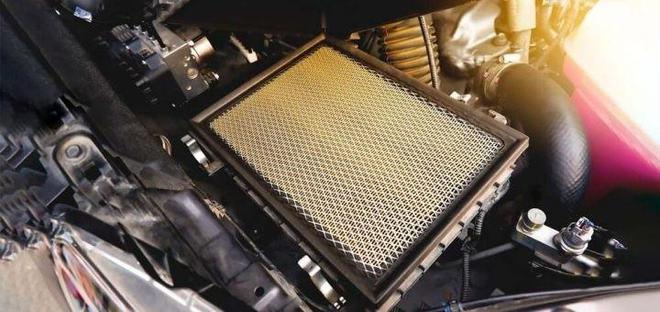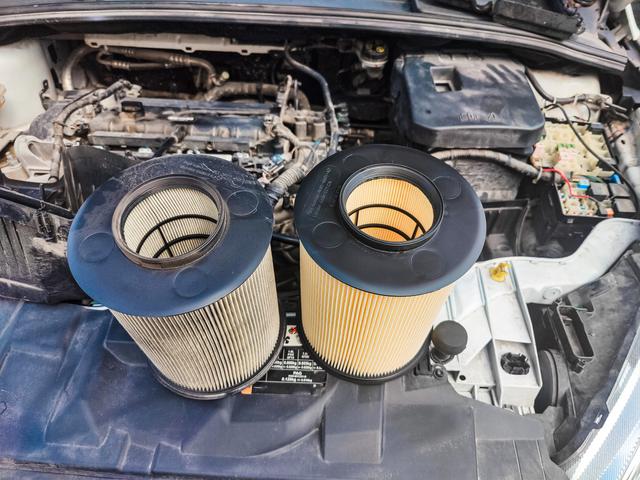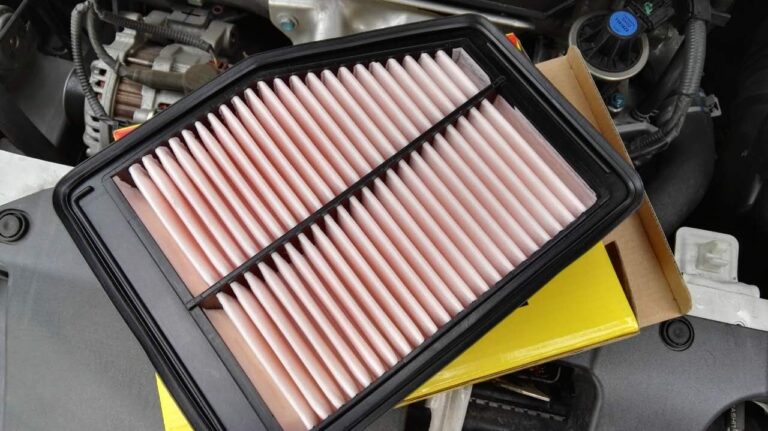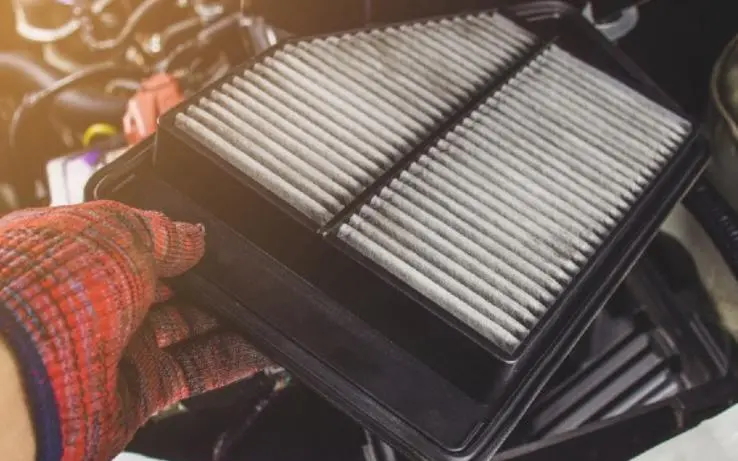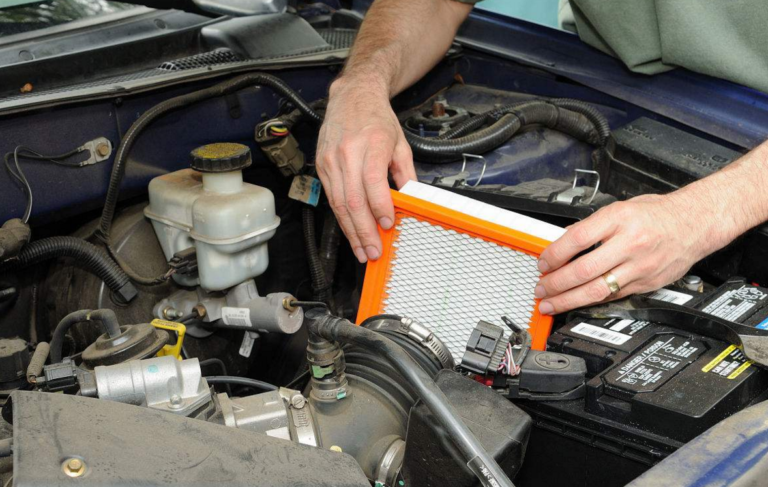How often should we change our air filter car? What should we know when changing it?
Changing your air filter car is a crucial task that must be completed and can significantly impact the performance and lifespan of your vehicle. However, there are several factors to consider to ensure you do it correctly. Here is a comprehensive guide on what to look out for when changing your air filter car.
1. Air filter type
Inertial oil bath air filter: This type of filter utilizes oil bath and filtration methods, offering benefits such as low intake resistance and suitability for dusty and sandy conditions. However, it has drawbacks like low filtration efficiency, heavy weight, high cost, and inconvenient maintenance. As a result, it is gradually being phased out in modern vehicles.
Paper Dry Air Filter: Made of resin-treated microporous filter paper, this type of filter offers high filtration efficiency, a simple structure, lightweight design, low cost, and easy maintenance. It is currently the most commonly used automotive air filter.
Polyurethane Filter Element Air Filter: The filter element is made of soft, porous, sponge-like polyurethane, which has the advantages of strong adsorption capacity but low mechanical strength. It is widely used in car engines.
Cyclone air filter: It utilizes the centrifugal force generated by the rotation of air to separate dust, providing high filtration efficiency. When performing maintenance, it is important to handle the deflector with care to avoid damage.
Wet Air Filter: It filters impurities in the air through an oil film. However, the filter fluid needs regular replacement, making maintenance more complex.
Dry air filter: It does not use liquid media, is typically made of paper or other synthetic materials, is easy to maintain, and simple to replace.
Electronic Air Filter: This innovative air filter utilizes electronic methods to adsorb tiny particles in the air. It is known for its high efficiency filtration and low energy consumption.
Composite air filter: It combines multiple filtering technologies, such as oil bath, filter paper, and electronic filtration, to provide a more comprehensive filtering effect.

2. The air filter is dirty
Reduced engine performance: A dirty air filter will hinder air circulation, resulting in a decrease in the amount of air inhaled by the engine, affecting the combustion efficiency of the fuel. This may lead to reduced engine power, decreased acceleration performance, and even difficulty in starting.
Reduced fuel economy: When the air filter is clogged, the engine will increase the amount of fuel injection to compensate for the lack of air in order to maintain normal operation, resulting in a significant increase in fuel consumption.
Increased Engine Wear: Dust and particles present in unfiltered air can accelerate the wear of the piston, piston rings, and cylinder walls, ultimately reducing the engine’s lifespan.
Increased Emission Pollution: Dirty air filters can result in incomplete combustion, increased harmful gas emissions, and may cause the vehicle to fail emission tests.
The throttle is prone to dirt and carbon deposition:leading to unstable idle speed and even stalling when waiting at traffic lights.
Insufficient air intake can lead to reduced vehicle power and increased fuel consumption.
Oil stains are found in the air filter:This may be the result of crankcase oil and gas passing through the crankcase ventilation valve on the engine. While this is a normal phenomenon, it is important to replace the air filter regularly.
The roar is muffled:and the acceleration is slow due to insufficient intake, which results in inadequate cylinder pressure. Consequently, the engine fails to operate effectively, causing the water temperature to rise, and the exhaust smoke to thicken during acceleration.
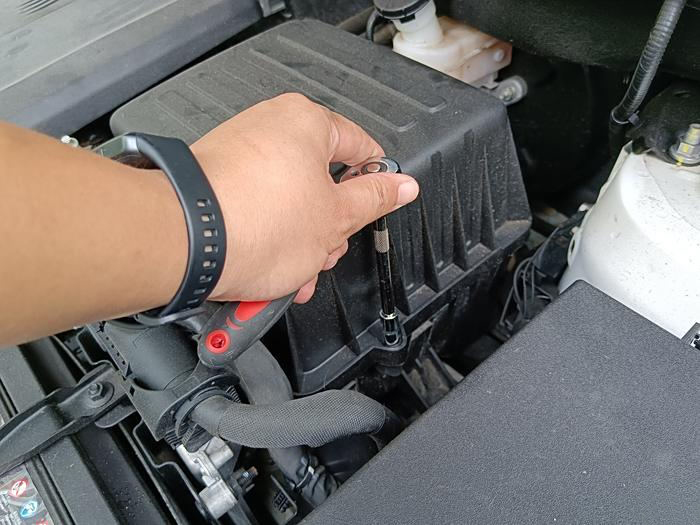
3. Replacement Frequency
Manufacturer’s Guide: The frequency of air filter replacement should be determined based on the vehicle’s operating environment and the manufacturer’s recommendations. Typically, it is recommended to replace the air filter every 10,000-20,000 kilometers or once a year, especially in urban environments. If the vehicle frequently operates in areas with poor air quality or high dust levels, the replacement frequency may need to be increased.
Check: Even if your car has not yet reached the recommended mileage, it is a good idea to check the air filter regularly. If it looks dirty or clogged, replace it as soon as possible.
4. Correct installation method
Open the engine hood: Locate and open the engine hood latch, then use the strut to secure the engine hood in place.
Determine the position of the air filter: The air filter is typically situated on one side of the engine compartment, connected to the air intake pipe, and resembles a square black plastic box.
Open the air filter box: If the air filter box is secured by a clip, gently lift the metal clip to open the cover; if it is secured with a screw, you need to unscrew the screw using a screwdriver.
Remove the old air filter: Inspect the old filter for excessive dust. If needed, clean it using compressed air. If the filter appears black or clogged, it should be replaced.
Clean the air filter box: Before installing the new filter, thoroughly clean the dust at the bottom of the air filter box.
Install the new air filter:by placing it into the air filter box. Note that there may be a mark on the filter to prevent incorrect installation, so ensure it is placed correctly. Next, secure the air filter box cover by fastening the clips or screws as needed to ensure proper sealing.
Check the installation: After installing, start the engine to ensure it runs normally, then lower the engine cover.
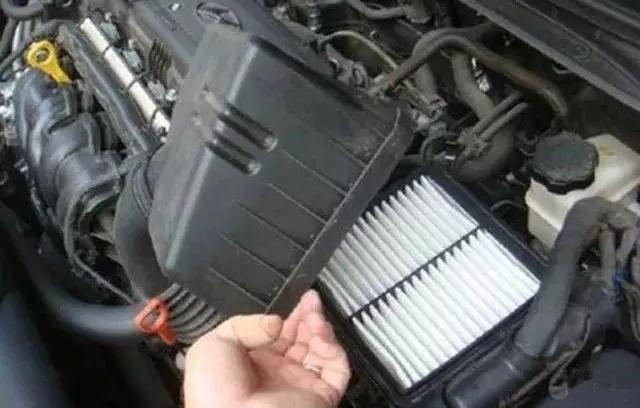
5. Professional assistance in replacing car air filters
DIY vs. Professional Service: While changing your air filter is generally a simple task, if you’re unsure of the process, it’s best to have a professional mechanic do it. They can also check for any other potential issues during the replacement process.
Conclusion
Changing your air filter car is a small but important task that can greatly affect your vehicle’s performance. By considering factors such as filter type, driving conditions, and signs of wear, you can ensure your car runs smoothly and efficiently. Regular inspections and timely air filter replacements will help maintain the health of your engine and save you money in the long run.

